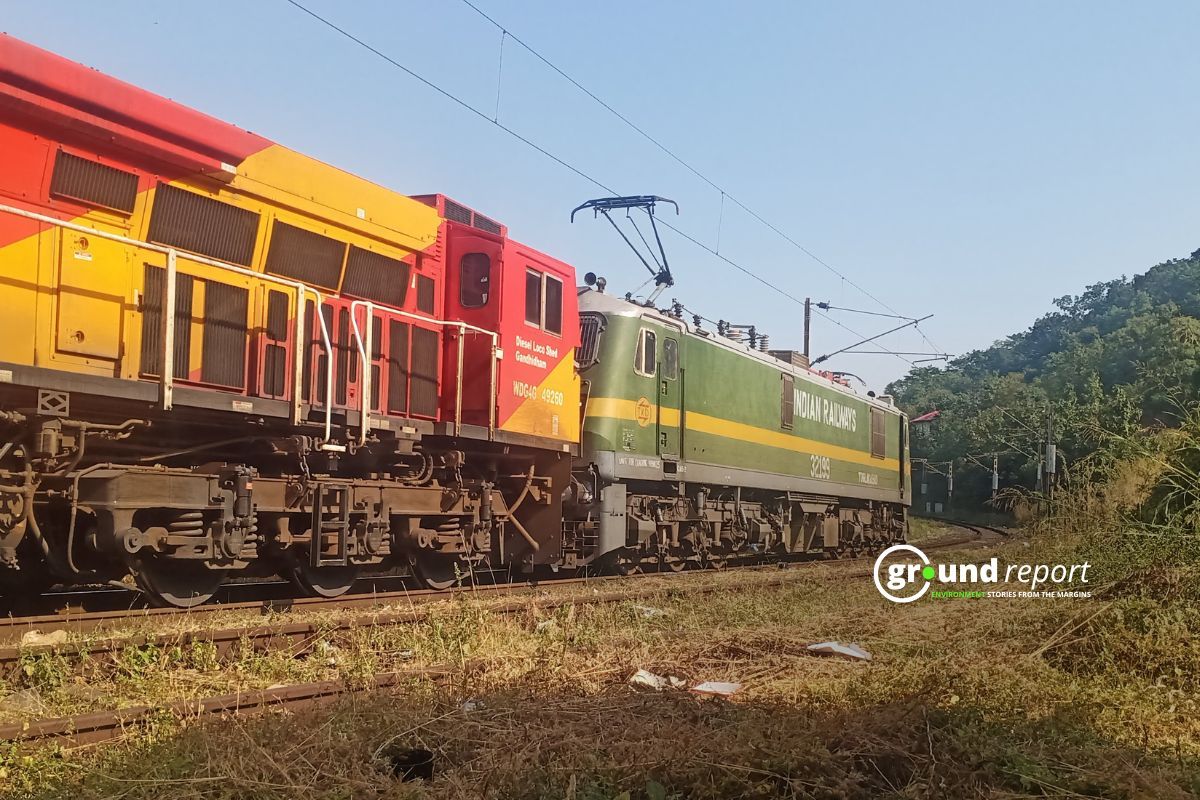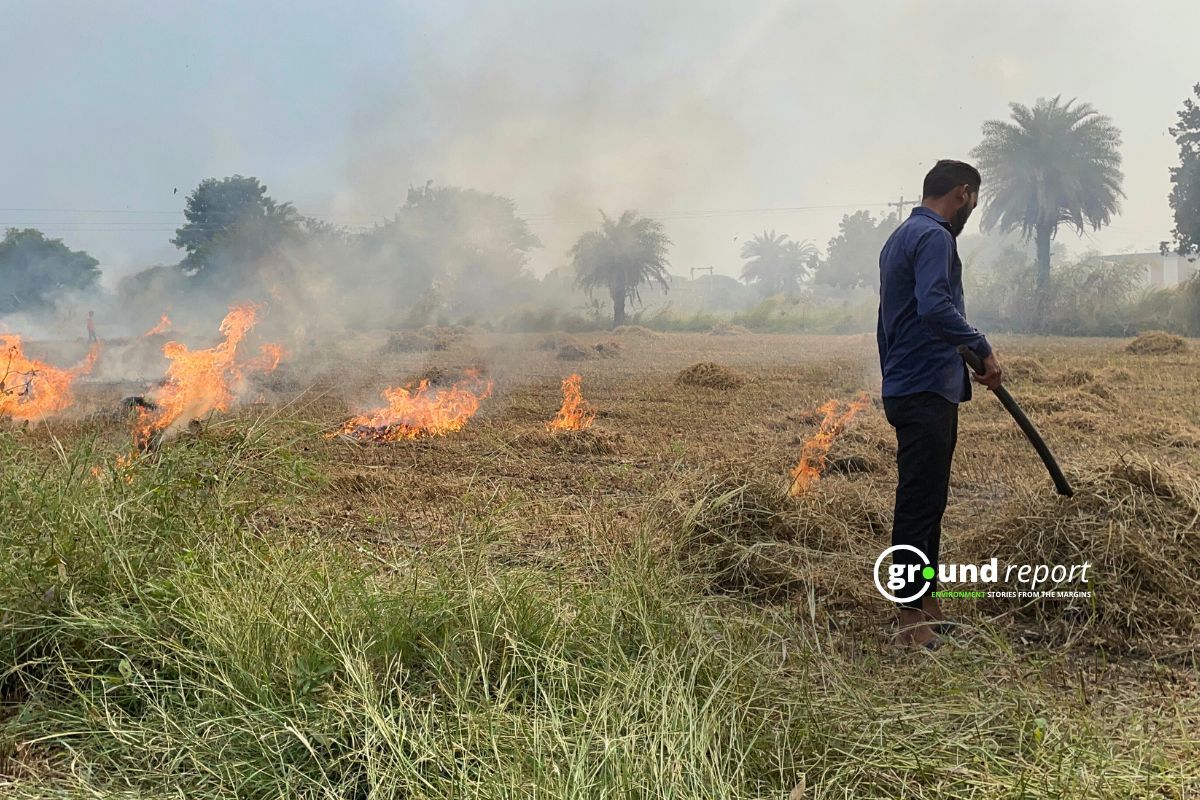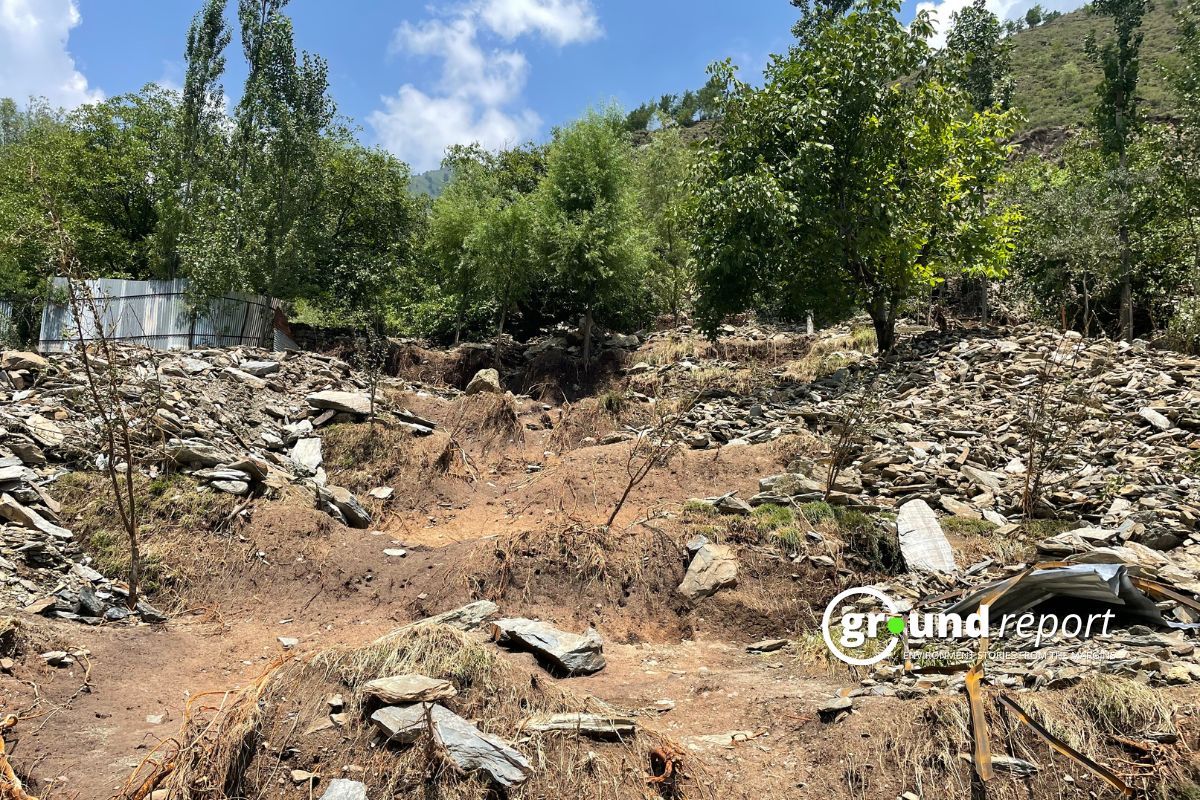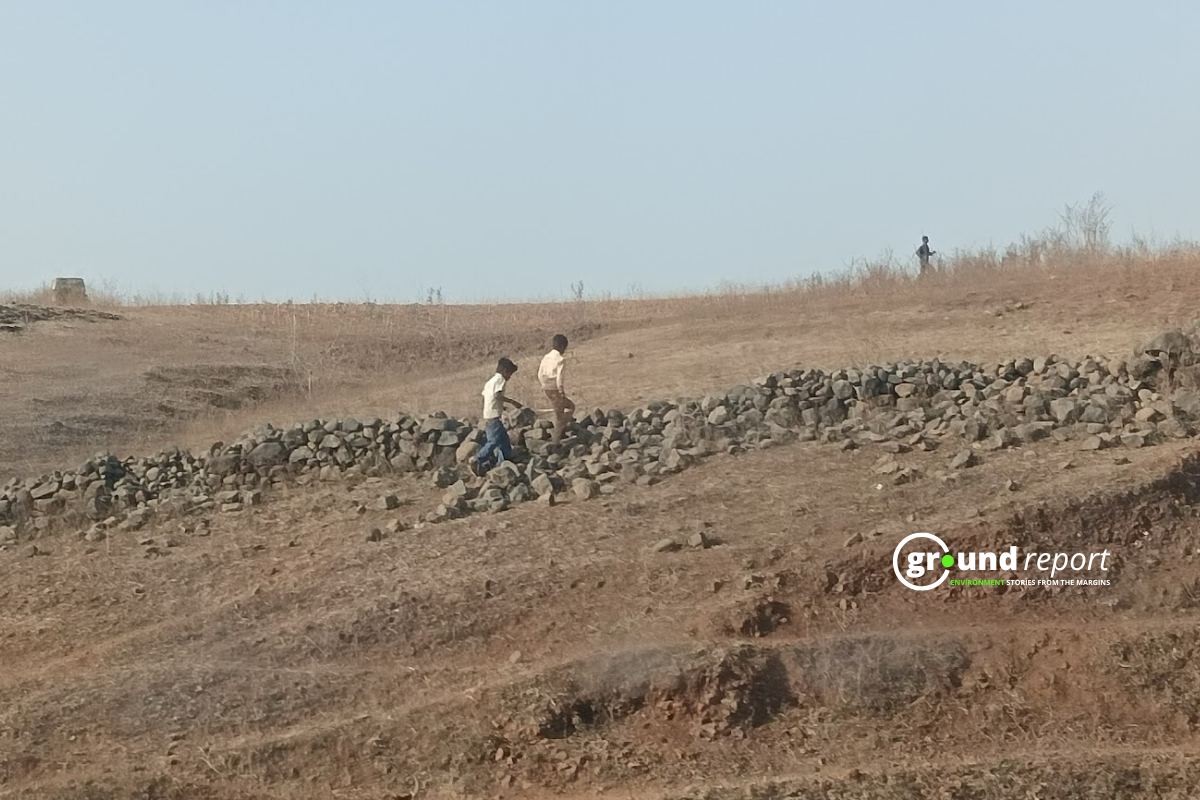Madhya Pradesh, India’s leading tiger state with 785 big cats, faces a grave contradiction—it also tops the nation in tiger deaths. While poaching remains the primary threat, train accidents have emerged as the second deadliest killer of these endangered animals.
Railway tracks in Madhya Pradesh are proving to be fatal for wild animals, especially tigers. Recently, on the night of 14-15 July 2024, three cubs of a tigress were hit by a train in the forested area of the Pahadi Nala section near Midghat railway station, about 70 km from Bhopal, in which one cub died on the spot, while two cubs died during treatment in Bhopal. After this train accident, the grief of the helpless tigress who lost her three cubs has moved people across the country and raised questions on the work being done for the conservation of wildlife in Madhya Pradesh.
Madhya Pradesh leads India’s tiger statistics, both in population and mortality. Home to 785 of India’s 3,167 tigers, according to the 2022 national assessment, the state earned its “Tiger State” title.
However, this distinction comes with a concerning record: of the 107 tiger deaths reported nationwide in 2024, Madhya Pradesh accounts for 34, the highest among all states, according to the National Tiger Conservation Authority.
‘Tiger suicide point’

The Budhni-Midghat railway track, passing through Ratapani Wildlife Sanctuary, has earned the notorious label of “tiger suicide point.” Since 2015, this track alone has claimed 22 wild animals, including seven tigers, 14 leopards, and one bear.
Two other hazardous railway lines crossing through Sanjay-Dubri Tiger Reserve and Satna Sanctuary have caused 40 additional wildlife casualties in just three years, including three tigers and eight leopards.
A 2022 CAG report on Madhya Pradesh’s wildlife conservation highlighted critical safety concerns along railway corridors. Despite the State Wildlife Board’s initial 40 km/hour speed restriction, this safety measure was later revoked at the railway authority’s request. These findings underscore the conflict between railway operations and wildlife protection in the state’s sanctuaries.
In the year 2017, the State Wildlife Board had ordered to identify sites for underground passages, chain link fencing, and the formation of a committee to monitor safety measures on railway lines where wild animals died in rail accidents, but this has not been done.
The CAG report revealed that animal underpasses and overpasses were to be built to reduce rail accidents, but CAG did not find any document in which the map, geotagging, and length of these animal underpasses and overpasses were identified or which could show that this action is being taken in the state.
Railways’ broken promises
The news of the death of cubs in an accident on the Budhni-Midghat railway track passing through the Ratapani Sanctuary on 14-15 July 2024 became a topic of discussion at the national level. It was told about this accident that a tigress was crossing the railway track with her three cubs when this accident happened. In this, one cub died on the spot and two cubs were injured. These injured cubs were rescued by sending a special train of one coach, and treatment was started by bringing them to Van Vihar in Bhopal, where they could not be saved.
This was the first case in the state of rescuing injured tiger cubs by a special train. After ordering this special operation, the sensitivity of Chief Minister Mohan Yadav was presented as an example in the media.
Environmental activist Rashid Noor Khan says that “shameless officials have left no stone unturned to make these deaths a PR event.”
He further says, “In these train accidents, wild animals have not died; these are murders. The railway and forest department officials are responsible for these murders; they should be given the harshest punishment.”
Agreeing with him, environmental activist Ajay Dubey says,
“It is unfortunate for the country and the state that the efforts being made to prevent train accidents in the state are proving to be inadequate.”
Railway Death Trap: Budhni-Midghat Line
The Budhni-Midghat controversy stems from a Rs 287.35 crore third railway line project through Ratapani Sanctuary, approved in 2011-12. Despite the Environment Ministry’s 2017 clearance mandating wildlife protection measures—including animal passes, fencing, and speed restrictions—these conditions remain largely unfulfilled even after the 3rd line’s completion in December 2023.
A September 2024 State Wildlife Branch meeting revealed critical lapses: incomplete animal overpasses and poorly designed underpasses that flood during monsoons. Wildlife activist Ajay Dubey criticized the authorities, stating,
“If the recent tiger cubs’ accident hadn’t occurred, forest officials would never have known about railways breaking their promise.” He added that conservation rules are either “limited to papers or implemented half-heartedly.”
The railway continues to operate high-speed trains daily, disregarding the mandated 40 km/hour speed limit and other safety protocols, putting wildlife at constant risk.
Ground Reality

Railway PRO Naval Agarwal claims extensive safety measures: “Railways has built chain link fencing, six check dams, and four underpasses across Budhni, Midghat, Choka, and Barkheda sections.”
However, our reporter and environmental activist Rashid Noor’s field inspection revealed significant gaps. The underpasses were built on existing drainage systems, now blocked with debris.
“The culvert under the first railway line is completely clogged with stones, gravel, and soil, with no maintenance,” notes Noor.

Further inadequacies include malfunctioning sensor lights in the new tunnel, incomplete chain link fencing, and missing animal corridors. While the second and third lines have tunnels, the first line remains completely exposed, and promised animal overpasses were never constructed.
Speeding trains threaten wildlife
Despite a short-term wildlife protection plan mandated by the Forest Department, West Central Railway failed to implement basic safety measures.
“The railway ignored requirements for reduced speeds, horn signals, patrolling, and protective nets,” says DFO Hemant Raikwar of Obedullaganj Forest Division.

The disconnect between policy and practice became evident when Railway Safety Commissioner Manoj Arora conducted a trial run at 100 kmph in December 2023, though official speed limits were set at 75 kmph for passenger trains and 65 kmph for goods trains. “Despite repeated meetings, railways refuse to reduce train speeds,” adds Raikwar.
When questioned about the July 2024 tiger cubs’ accident, Railway PRO Naval mentioned an ongoing investigation of the loco pilot but provided no details about any actions taken.
Another deadline
Additional Principal Chief Conservator of Forests (Wildlife) L. Krishnamurthy says that
“railway officials are trying to avoid complying with their promises and the set conditions, which is why they are neither following the short-term plan properly nor are they following the conditions of environmental clearance properly.”
Krishnamurthy says that he has raised all these issues in the recent meeting of the State Wildlife Board, and his focus is that until all the promises are fulfilled, the railways should follow the short-term plan properly. So that wildlife can be saved.
Chief Project Manager of Bhopal Railway Development Corporation Limited, Raghvendra Saraswat, says that
“the construction of the Animal Green Overpass was stopped due to a lack of budget and approval from the railways, but now the approval has been received and overpasses will be constructed at Midghat, Choka, Budhni, and Barkheda of this rail section.”
He further says that ”5 tunnels have been constructed during the work of the third line, out of which the first rail line is open near four tunnels, which will be covered from above, and the construction of the animal overpass will be completed.”
There are solutions
India’s largest road project, the Nagpur-Mumbai Super Communication Expressway (NMSCE), is also known as Samriddhi Mahamarg. Built under the Greenfield project, this 701 km long and six-lane highway is presenting an example of a successful road project that reduces biodiversity-related concerns and wildlife deaths in road accidents. 7 animal overpasses and 17 animal underpasses have been constructed in this highway, which give wildlife unhindered freedom to move in their corridors.
The Wildlife Institute of India (WII) conducted a study in February 2024 by installing 64 trap cameras in animal overpasses and animal underpasses. In the first month of this study, it was revealed that these overpasses and underpasses are being used by animals like Nilgai, Chinkara, wild boar, Indian hare, Indian crested porcupine, mongoose, and leopard to move in their corridors.
This expressway passes through 10 districts of Maharashtra, and its 117 km section passes through wildlife habitats, tiger corridors, and eco-sensitive zones (ESZ) of three sanctuaries. It also reduces travel time between Mumbai and Nagpur.
Conclusion
There is a need to seriously construct safe paths for the movement of wildlife on railway tracks and roads passing through forest areas across the country. Because permission for construction in forest areas is being taken on this basis. Along with this, there is a need to change the viewpoint that wild animals are coming on railway tracks and roads; the reality is that we have created facilities for our convenience in their homes.
Support us to keep independent environmental journalism alive in India.
Keep Reading
Underpaid and overworked: Story of MP’s women farm labourers
Who let the dogs out? Noise pollution, climate fuels dog bites in MP
Second bird survey in Sardarpur Sanctuary unveils 24 new species
Displacement only way out for India’s Tiger conservation project?
Follow Ground Report on X, Instagram and Facebook for environmental and underreported stories from the margins. Give us feedback on our email id greport2018@gmail.com.
Don’t forget to Subscribe to our weekly newsletter, Join our community on WhatsApp, and Follow our YouTube Channel for video stories.










